How To Grow Peas
Peas are great crop to plant before the last frost. Peas are legumes like beans, vetch and lupine.
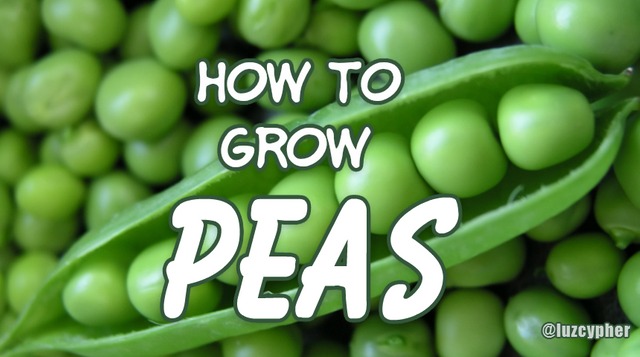
There are two main categories of peas. English peas, also called garden peas, that are good for shelling and edible podded peas which are like snap peas and snow peas.
Direct sow peas as soon as the ground is workable, but not soaked. For many areas February and March are your prime pea planting times. Peas can also make a great fall crop and can be planted at the tail end of the season when the fall weather starts to set in.
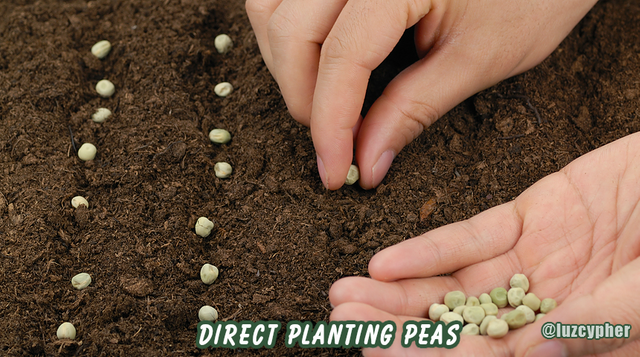
Peas tolerate light to medium frosts and can germinate at temperatures as low as 40 degrees. Ideally the soil temperature should be fifty to sixty degrees Fahrenheit for the quickest germination. Peas like well drained soil and a lot of organic matter.
You may want to add a little compost.
You should plant peas in full sun, but they will tolerate part shade.
Did you know peas can actually fix nitrogen in the soil? And if you're planting in new garden you can at add some rhizobacteria when planting and not only will the peas grow better but the soil will be richer for the next crop.
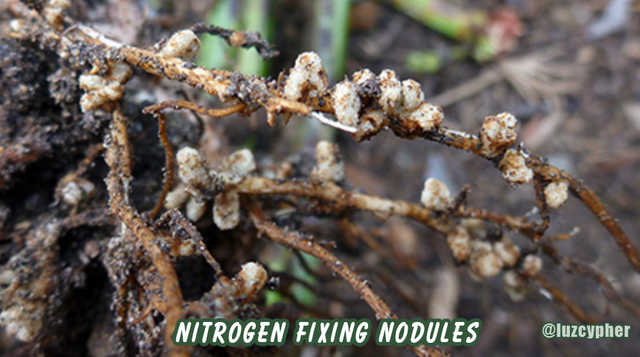
To improve germination I've soaked the seeds overnight in water. Now after taking it out on the water, add a little bit of milk and molasses. And then a sprinkle the inoculant on the seeds.
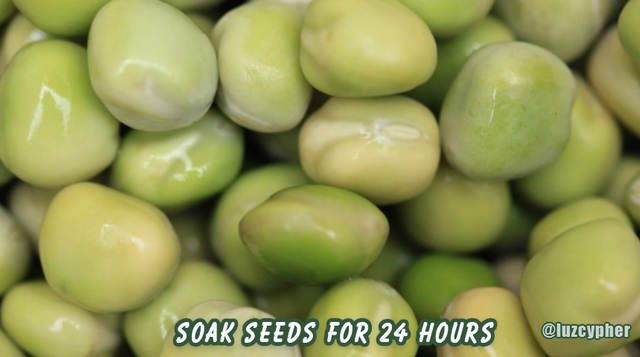
Plant peas one to four inches apart and one to two inches deep. You can also plant the seeds an inch apart in a three-inch band. This method uses about 25 seeds per foot.
Non dwarf peas will climb just about anything. Check out our video Vertical Gardening, You can leave the vining peas to sprawl instead instead of trellising them but you'll get better yields if they're trellised.
Succession plant peas every few weeks in the spring. Peas do best when the outside temperatures are between 60 and 75 degrees Fahrenheit. There are some heat tolerant varieties like sugar snap peas and you can sow those a little bit later in the season.
Peas like moderate water up until the time they start to flower and then you want to ease up on the watering a little bit.
It's time to harvest our peas. Different types of peas are harvested at different times. Peas have a high sugar content and the sugar will turn to starch very quickly after you harvest so it's best eat them right after you harvest. In fact forty percent of the sugars will turn to start within an hour of harvesting even in the refrigerator.
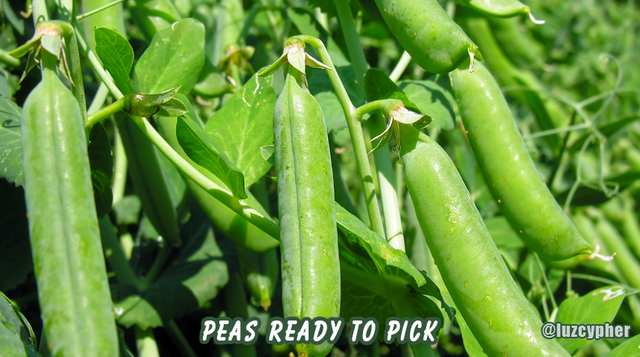
Harvest snow peas when the pods are two to three inches long and still flat. Snap peas should be harvested when they're pump but before the pods get fibrous.
If you miss some peas you can shell them and eat them that way. For shelling peas, pick them when the pods are nice and round. Pick a few every couple of days as harvest time gets close so you can pick them in their prime. Pick peas every one to three days.
Pods on the bottoms and the vine will be ready first. The dwarf bush types will produce a determined number flowers and peas and then they'll be done.
Health Benefits Of Peas
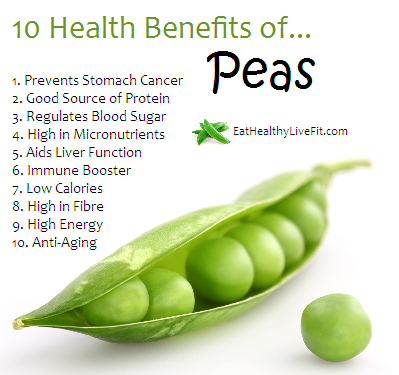
- We don't usually think about green peas as an exotic food in terms of nutrient composition—but we should. Because of their sweet taste and starchy texture, we know that green peas must contain some sugar and starch (and they do). But they also contain a unique assortment of health-protective phytonutrients. One of these phytonutrients—a polyphenol called coumestrol--has recently come to the forefront of research with respect to stomach cancer protection. A Mexico City-based study has shown that daily consumption of green peas along with other legumes lowers risk of stomach cancer (gastric cancer), especially when daily coumestrol intake from these legumes is approximately 2 milligrams or higher. Since one cup of green peas contains at least 10 milligrams of coumestrol, it's not difficult for us to obtain this remarkable health benefit.
- The unique phytonutrients in green peas also provide us with key antioxidant and anti-inflammatory benefits. Included in these phytonutrients are some recently-discovered green pea phytonutrients called saponins. Due to their almost exclusive appearance in peas, these phytonutrients actually contain the scientific word for peas (Pisum) in their names: pisumsaponins I and II, and pisomosides A and B. When coupled with other phytonutrients in green peas—including phenolic acids like ferulic and caffeic acid, and flavanols like catechin and epicatechin—the combined impact on our health may be far-reaching. For example, some researchers have now speculated that the association between green pea and legume intake and lowered risk of type 2 diabetes may be connected not only with the relatively low glycemic index of green peas (about 45-50) and their strong fiber and protein content, but also with this unusual combination of antioxidant and anti-inflammatory phytonutrients.
- Green peas stand out as an environmentally friendly food. Agricultural research has shown that pea crops can provide the soil with important benefits. First, peas belong to a category of crops called "nitrogen fixing" crops. With the help of bacteria in the soil, peas and other pulse crops are able to take nitrogen gas from the air and convert it into more complex and usable forms. This process increases nitrogen available in the soil without the need for added fertilizer. Peas also have a relatively shallow root system which can help prevent erosion of the soil, and once the peas have been picked, the plant remainders tend to break down relatively easily for soil replenishment. Finally, rotation of peas with other crops has been shown to lower the risk of pest problems. These environmentally friendly aspects of pea production add to their desirability as a regular part of our diet.
- Even though green peas are an extremely low-fat food (with approximately one-third gram of total fat per cup) the type of fat and fat-soluble nutrients they contain is impressive. Recent research has shown that green peas are a reliable source of omega-3 fats in the form of alpha-linolenic acid (ALA). In one cup of green peas, you can expect to find about 30 milligrams of ALA. About 130 milligrams of the essential omega-6 fatty acid, linoleic acid, can also be found in a cup of green peas. This very small but high-quality fat content of green peas helps provide us with important fat-soluble nutrients from this legume, including sizable amounts of beta-carotene and small but valuable amounts of vitamin E. credit
Another cool thing about peas is they store very well providing food over the winter. I like to plant them everywhere as it improves the soil anyway and as long as you take the time to harvest them before summer heats up, you'll get lots of peas to add to soups and stews.
Freezing and storing them is easy
HOW TO BLANCH AND FREEZE SHELLED PEAS
Step 1
Wash shelled peas in a big bowl of cold water. Simply swish about and scoop out with your hands.
freshly washed peas
Step 2
Bring a large pot of water to a hard boil. Add peas to boiling water being sure not to overcrowd the pot. There should be plenty of room for peas to move and the water should be able to come back to a boil within 1 minute. If there are too many peas in the pot, some will get over-cooked and some will be under-cooked. wash freshly shelled peas
Step 3
Once the water and peas return to a boil, watch the timer carefully and boil (blanch) your peas for only 1 1/2 minutes. >That’s all you need for blanching.
add peas to boiling water
** Step 4**
Immediately scoop out your peas and cool them instantly in an ice water bath. The ice water will help ensure the peas don’t continue to cook from their own heat. Overcooking the peas will leave them too mushy once you reheat them to serve later on. Once all the peas are cooled, drain the water well.
ice bath after blanching peas
Step 5
Drain peas well and place in freezer bags. You can freeze in individual bags based on the amount of peas you would typically serve at one meal, or you can freeze peas on a cookie sheet or serving tray and transfer to larger freezer bags. Freezing them on freezer trays lets you pour out the frozen peas later on. credit
The tall vining types will continue to produce until the heat of summer sets in. Old peas taste starchy. If you want, you can leave old peas on the vine and let them dry and use them in soups or stews over the winter. So, grow some peas and grow organic for life.
Related Posts
How To Grow Cucumbers And Make Dill Pickles --- by @luzcypher
How To Grow Carrots --- by @luzcypher
How To Grow Onions, Leeks And Shallots --- by @luzcypher
How To Grow Beets --- by @luzcypher
How To Grow Strawberries --- by @luzcypher
How To Grow Lettuce For Your Home And Market --- by @luzcypher
How To Plant And Care For Artichokes In Your Garden --- by @luzcypher
How To Plant Potatoes For A Year Round Harvest --- by @luzcypher
The Magic Of Homemade Fertilizer Feeding Your Garden With Comfrey --- by @luzcypher
Benefits Of Garlic And How To Grow It In Your Garden --- by @luzcypher

This post has been ranked within the top 25 most undervalued posts in the first half of Feb 12. We estimate that this post is undervalued by $11.98 as compared to a scenario in which every voter had an equal say.
See the full rankings and details in The Daily Tribune: Feb 12 - Part I. You can also read about some of our methodology, data analysis and technical details in our initial post.
If you are the author and would prefer not to receive these comments, simply reply "Stop" to this comment.
cool